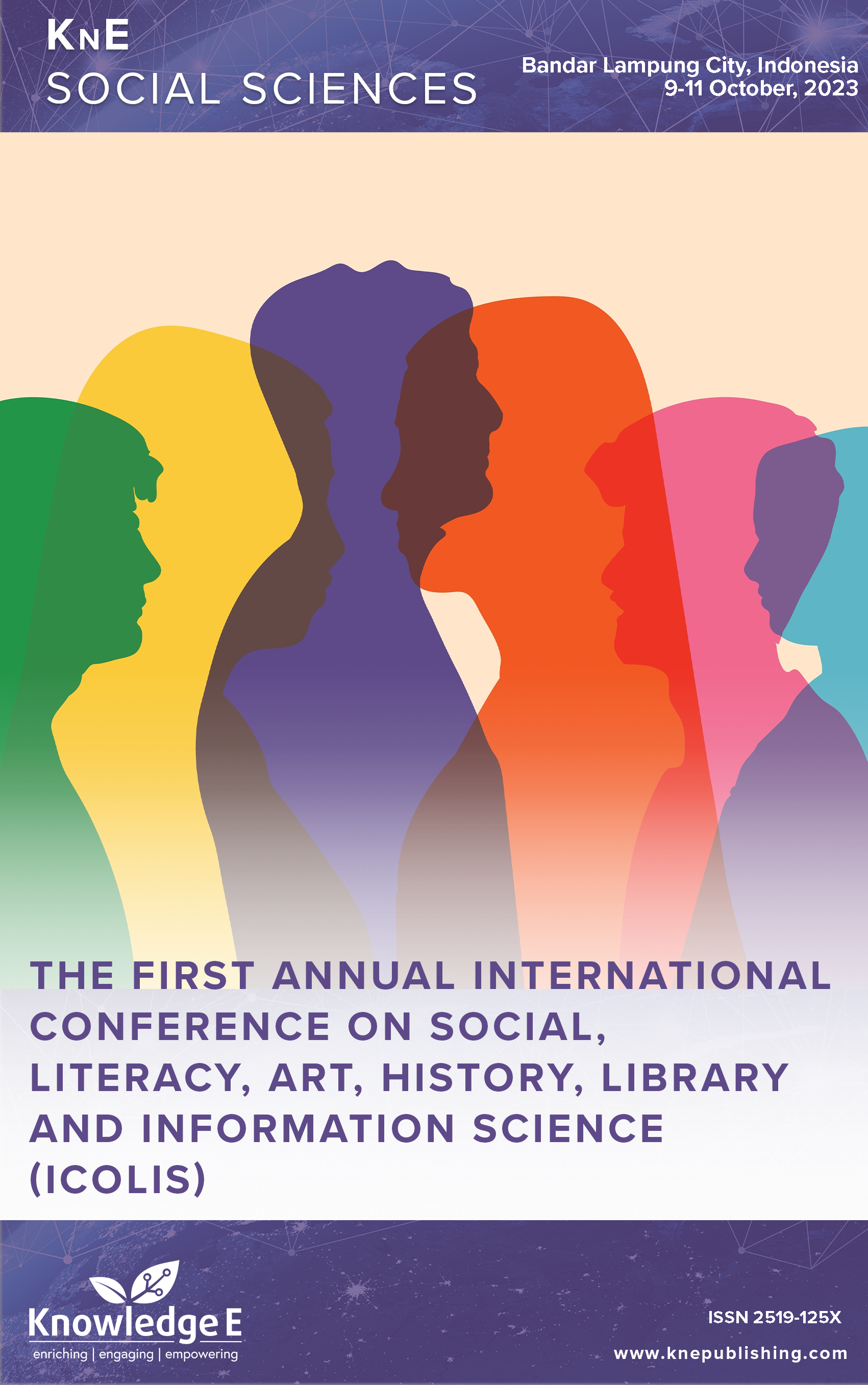The Naqsabandiyah Khalidiyah Order: Syaikh Imam Manaqib's Role in Sufi Preaching in Adiluwih, Pringsewu 1960-1988
DOI:
https://doi.org/10.18502/kss.v9i12.15859Abstract
This study examines the Sufi teachings of Sheikh Imam Manaqib, with a focus on his role in spreading the Naqshbandiyya Khalidiyya Sufi order in Adiluwih and its surrounding areas. Sheikh Imam Manaqib, originally from East Java, migrated to Lampung in the 1950s and chose Adiluwih as his place of residence. This study employs a historical research approach with a social perspective. The author utilizes the Great Man Theory as an analytical tool. The results revealed that Sheikh Imam Manaqib played a significant role in his Sufi mission by dedicating himself to disseminating knowledge and seeking spiritual enlightenment. Sheikh Imam Manaqib developed a profound understanding of Sufism through formal and informal education in East Java, especially at the Islamic boarding school Mambaul Hikam. His teachings encompassed various subjects, ranging from the fundamentals of Sufism to the practical implementation of the doctrines of the Naqshbandiyya Khalidiyya order. Additionally, unique practices such as “Turu Mayit” were taught to seekers as part of their spiritual development. Sheikh Imam Manaqib’s efforts in teaching the Naqshbandiyya Khalidiyya order resulted in the rapid formation of a thriving community, officially recognized by the Central Lampung Regent in 1988. His legacy continues to have an impact to this day, influencing spiritual seekers from various age groups and backgrounds. This research provides insights into Sheikh Imam Manaqib’s distinctive approach to teaching the Sufi order and underscores the enduring influence of his teachings on the Lampung community.
Keywords: Sufi Order, Sufism, Naqshbandiyyah Khalidiyah, Sheikh Imam Manaqib, Sufi Preaching
References
Abdurrahman, dudung & Nur, S. (n.d.). sufisme tarekat Nusantara abad 17-19.pdf.
Abdurrahman D. Metodologi Penelitian Sejarah Islam. Ombak; 2011.
Algar H. The Naqshbandi Order: A Preliminary Survey of Its History and Significance. Stud Islam. 1976;44(44):123–52. DOI: https://doi.org/10.2307/1595445
Van Bruinessen M. The Origins and Development of the Naqshbandi Order in Indonesia. Islam. 1990;67(1):150–79. Available from: https://www.academia.edu/download/54355235/ Bruinessen_Origins_and_development_of_the_Naqshbandi_order_in_Indonesia. pdf
Van Bruinessen M. Tarekat Naqsabandiyah di Indonesia. Studi Islamika; 1996.
Van Bruinessen M. Tarekat Naqsabandiyah Di Indonesia. Penerbit Mizan; 1992.
Bruinessen, M. Van. (2020). Kitab Kuning, Pesantren dan Tarekat.
Dhofier, Z. (1982). Tradisi Pesantren, Studi Tentang Pandangan Hidup Kiyai. LP3ES.
Ensiklopedi 22 Aliran Tarekat dalam Tasawuf. (n.d.).
Gommo, I. D., Rusdin, R., & Rusdin, R. (2022). The Concept of Spiritual Education of the Naqsyabandiyah Khalidiyah Tarekat in the Formation of the Congregation ’ s Morals at Surau Kayumalue Palu. 657–663.
Hadi S. (2011). Tarekat Naqsyabandiyah Khalidiyah di Minangkabau: Tela’ah Teks al-Manhal al-’Adhb li-Dhikr al-Qalb. Manuskripta; Vol 1 No 2 (2011): ManuskriptaDO - https://doi.org/10.33656/Manuskripta.V1i2.21, Vol 1(No 2), 123–169. http://journal.perpusnas.go.id/index.php/manuskripta/article/view/21
Harjani, M. dan. (2009). Metode Dakwah. Kencana.
Hasbullah M. Sejarah Sosial Intelektual Islam di Indonesia. Pustaka Setia; 2012.
Hidayat Z, Syahrul M. Indonesian Sufi in Malay world: A preliminary exploration with reference to Tariqa Naqshbandiyya-Khalidiyya Babussalam (TNKB). Journal of Indonesian Islam. 2017;11(1):201–22. DOI: https://doi.org/10.15642/JIIS.2017.11.1.201-222
Imron Aba. Di Sekitar Masalah Tarekat Naqsabandiyah. Menara Kudus; 1980.
Kartanegara M. Menyelami Lubuk Tasawuf. Erlangga; 2006.
KBBI. (n.d.). Peran. Online.
18. Lubis S. Tharekat Naqsabandiyah Kholidiyah Saidi Syekh Prof. Dr. H. Kadirun Yahya, MA di Universitas Pembangunan Panca Budi Medan. Almufida. Jurnal Ilmu- Ilmu Keislaman. 2018;3(1):44–69.
Madjid, M. D. (2021). Metode Sejarah Teori dan Praktek.
Mardiyah, S. (2022). wawancara.
Maryanto, S. (2013). PONDOK PESANTREN AL-MANSHUR KLATEN.
Mulyati S. Tasawuf Nusantara, Rangkaian dan Mutiara Sufi Terkemuka. Kencana; 2006.
Nasution MY. Peran Strategis Ulama dalam Pengembangan Ekonomi Syariah. HUMAN FALAH: Jurnal Ekonomi Dan Bisnis Islam. 2014;1(1):17–28.
Said HA. Hakikat Tarikat Naqsyabandiah. Pustaka Al Husna Baru; 1994.
Sulasman. (2014). Metode Penelitian Sejarah. Pustaka Setia.
Syafi‘i, A. (2022). wawancara.
Umam S. The guardian of the integral vision of islamic practice: the naqshbandi sufi order in indonesia. Stud Islam. 2006;13(2):263–91. DOI: https://doi.org/10.15408/sdi.v13i2.568
Van Bruinessen M. (1998). Studies of Sufism and the Sufi Orders in Indonesia. Die Welt Des Islams, 38(2), 192–219. http://www.jstor.org/stable/1570744 https://doi.org/10.1163/1570060981254813. DOI: https://doi.org/10.1163/1570060981254813
Wahyudi. (2023). wawancara.
Ziaulhaq, H. (2015). Tarekat Naqsabandiyah Khalidiyah Babussalam.

